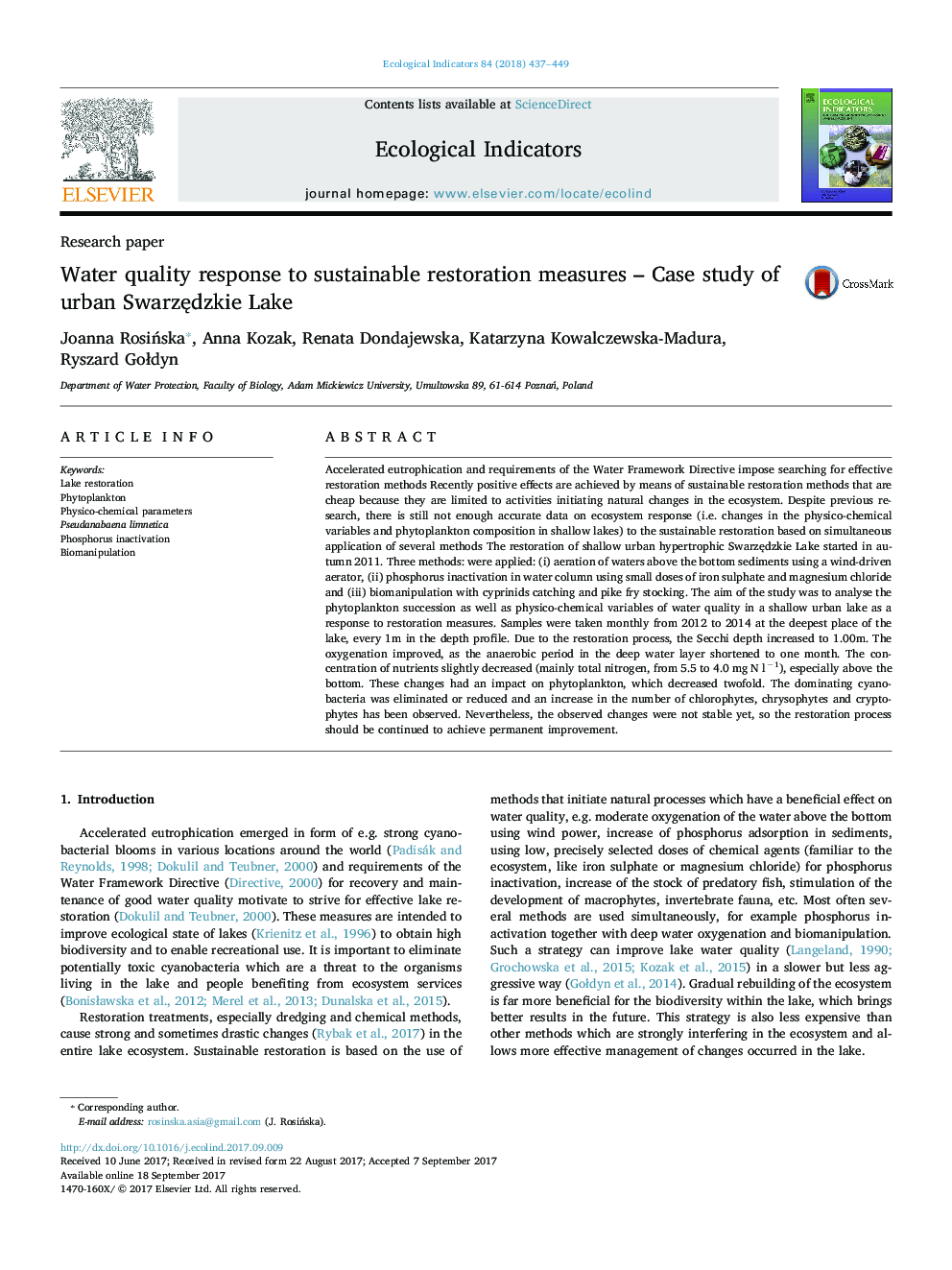| کد مقاله | کد نشریه | سال انتشار | مقاله انگلیسی | نسخه تمام متن |
|---|---|---|---|---|
| 5741567 | 1617118 | 2018 | 13 صفحه PDF | دانلود رایگان |

- The sustainable restoration of shallow lake caused rapid but not very strong biological response.
- Phytoplankton reconstruction was achieved; cyanobacteria were replaced by chrysophytes and chlorophytes.
- The oxygenation increased and concentration of nutrients decreased, mainly at the bottom.
- Improvement of oxygenation and use of magnesium chloride decreased concentration of nitrogen.
- Three years of restoration is not enough to achieve stability of the ecosystem.
Accelerated eutrophication and requirements of the Water Framework Directive impose searching for effective restoration methods Recently positive effects are achieved by means of sustainable restoration methods that are cheap because they are limited to activities initiating natural changes in the ecosystem. Despite previous research, there is still not enough accurate data on ecosystem response (i.e. changes in the physico-chemical variables and phytoplankton composition in shallow lakes) to the sustainable restoration based on simultaneous application of several methods The restoration of shallow urban hypertrophic SwarzÄdzkie Lake started in autumn 2011. Three methods: were applied: (i) aeration of waters above the bottom sediments using a wind-driven aerator, (ii) phosphorus inactivation in water column using small doses of iron sulphate and magnesium chloride and (iii) biomanipulation with cyprinids catching and pike fry stocking. The aim of the study was to analyse the phytoplankton succession as well as physico-chemical variables of water quality in a shallow urban lake as a response to restoration measures. Samples were taken monthly from 2012 to 2014 at the deepest place of the lake, every 1m in the depth profile. Due to the restoration process, the Secchi depth increased to 1.00m. The oxygenation improved, as the anaerobic period in the deep water layer shortened to one month. The concentration of nutrients slightly decreased (mainly total nitrogen, from 5.5 to 4.0 mg N lâ1), especially above the bottom. These changes had an impact on phytoplankton, which decreased twofold. The dominating cyanobacteria was eliminated or reduced and an increase in the number of chlorophytes, chrysophytes and cryptophytes has been observed. Nevertheless, the observed changes were not stable yet, so the restoration process should be continued to achieve permanent improvement.
266
Journal: Ecological Indicators - Volume 84, January 2018, Pages 437-449